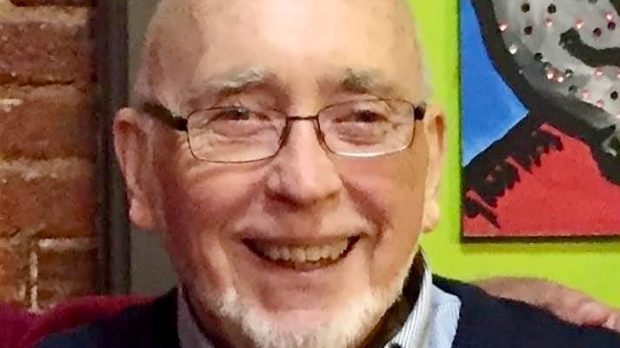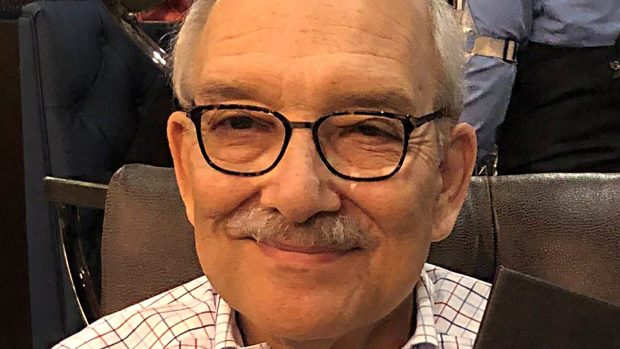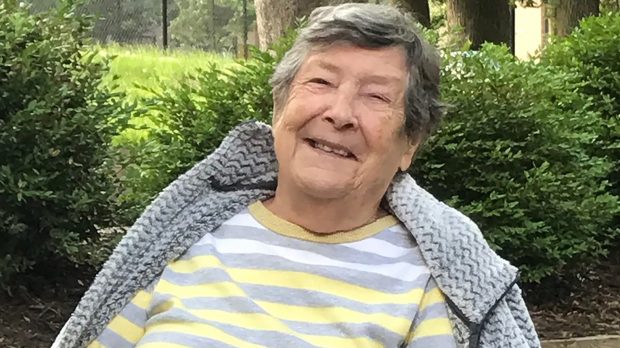
Michael J. Iampieri, a Loyola Blakefield art teacher whose in-the-dark sketches captured actors and performers on Baltimore stages, died of Parkinson’s disease complications June 13 at Gull Creek, an assisted living facility in Worcester County. The former Bolton Hill resident was 83.
Born in Baltimore and raised on Westshire Road, he was the son of Milton J. Iampieri, a Catonsville tailor, and Catherine Agate. A 1958 graduate of Mount Saint Joseph High School, he played in the school’s concert and marching bands and was an editor of the school newspaper. He also studied piano at what is today the Peabody Institute of the Johns Hopkins University for five years.
He briefly joined the Roman Catholic Xaverian Brothers and co-directed a choir and played the organ. After leaving the religious life, he earned bachelor’s and master’s degrees at the Catholic University of America in Washington. He also wrote the music for the university’s spring musical.
He joined the faculty at Loyola Blakefield, founded its art department and taught for 42 years.
“Michael was a skilled educator, a kind man, an enthusiastic arts ambassador, a friend to his students, an inspirer and dedicated to his craft,” said a former student, Towson attorney Christopher M. McNally.
“His art room smelled of fresh paint and photo development chemicals,” said Mr. McNally. “He was king of that studio. He had a signature bald head, close trimmed beard and smiling, twinkling eyes.”
“He taught me to draw what you see,” he said. “He let us shine and develop our own artistic personality.”
Mr. McNally said his teacher wanted students to draw the human face.

“It was one of the hardest things to draw, but he insisted we do it,” said Mr. McNally.
While at the Blakefield campus, Mr. Iampieri sketched live performances of student theatrical productions.
“He had this skill, making haunting images when I and my classmates were on the stage,” said Mr. McNally.
Mr. Iampieri, who also studied filmmaking at the Maryland Institute College of Art, became a regular presence at the Baltimore Theater Project, where he was named visual historian. Over the years, while seated in the auditorium — third row, right aisle — he sketched thousands of performers. He also drew at Center Stage, Peabody Institute, Left Bank Jazz Society and the Baltimore Symphony Orchestra.
“One of my teachers showed me a spontaneous non-intellectual way of drawing,” Mr. Iampieri wrote in his book, “Drawing in the Dark: The Art of Michael Iampieri,” published in 2020.
A 1987 Sun article praised his work, saying “his sketches capture the emotion of the stage,” adding that “serendipity [seems] to make it click’.”

The story explained his work “had a certain cartoon quality reminiscent of The New Yorker magazine fused with elements of [caricaturist] Al Hirschfeld and [1940s Baltimore artist] Aaron Sopher caricatures.”
“Michael was quiet, not easy to get to know and independent. He was one of the first vegetarians I ever met. His spiritual life evolved over time and his drawings were kind of a Zen moment for him,” said John Wilson, a friend and the book’s author and designer.
“No one approached drawing the way I did,” Mr. Iampieri wrote in the book. “In life drawing classes I’d do five drawings to their [other students] one drawing. Lines had to be fast and soft enough to respond. Faces and bodies are changing — I loved it.”
John Wilson, who knew him for 45 years, said, “Michael was always quick at it, so it wasn’t a far reach to capture people in movement. His drawings were unfolding — spontaneously. As the play unfolded, so did the drawings. It happens so fast.”
Of his work, Mr. Wilson said, “They happen at the moment they happen.”
“Somehow Michael’s drawings perfectly matched the energy or feeling of each performance,” said Mr. Wilson.
“He was one of the gentlest, most civilized, and good-humored individuals I’ve known.” said former Baltimore Sun artist Ann Feild Didyk, a friend, “He expressed more with a few quick strokes of a colored pencil than any artist I know.”
She recalled visiting Mr. Iampieri’s Bolton Hill studio.
“He’d put the front door key in a glove and toss it down to me on the street,” she said. “He was quite a gardener and raised snow peas on a porch. He’d make dinner and then play the piano.”
He was also a regular volunteer at Cinema Sundays at The Charles.
He donated his drawings to the Theater Project archive. Loyola Blakefield established the Michael Iampieri Award in his honor and a room at the school carries his name.
Survivors include his brother, John R. Iampieri, of Bishopville in Worcester County; a sister, Victoria Iampieri Gawel, of Utah; and nieces and nephews.
Plans for a life celebration are pending.



![By JIM VERTUNO AUSTIN, Texas (AP) — Singer, songwriter, satirist and novelist Kinky Friedman, who led the alt-country band Texas Jewboys, toured with Bob Dylan, sang with Willie Nelson, and dabbled in politics with campaigns for Texas governor and other statewide offices, has died. Friedman, 79, died Thursday at his family’s Texas ranch near San […] By JIM VERTUNO AUSTIN, Texas (AP) — Singer, songwriter, satirist and novelist Kinky Friedman, who led the alt-country band Texas Jewboys, toured with Bob Dylan, sang with Willie Nelson, and dabbled in politics with campaigns for Texas governor and other statewide offices, has died. Friedman, 79, died Thursday at his family’s Texas ranch near San […]](https://www.baltimoresun.com/wp-content/uploads/2024/06/Obit_Kinky_Friedman_46819.jpg?w=525)